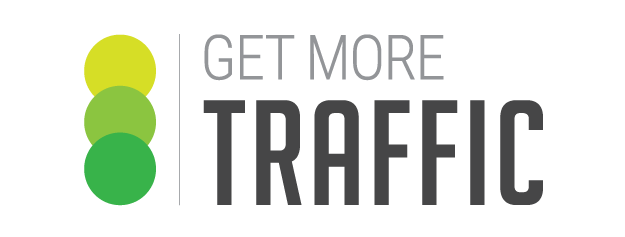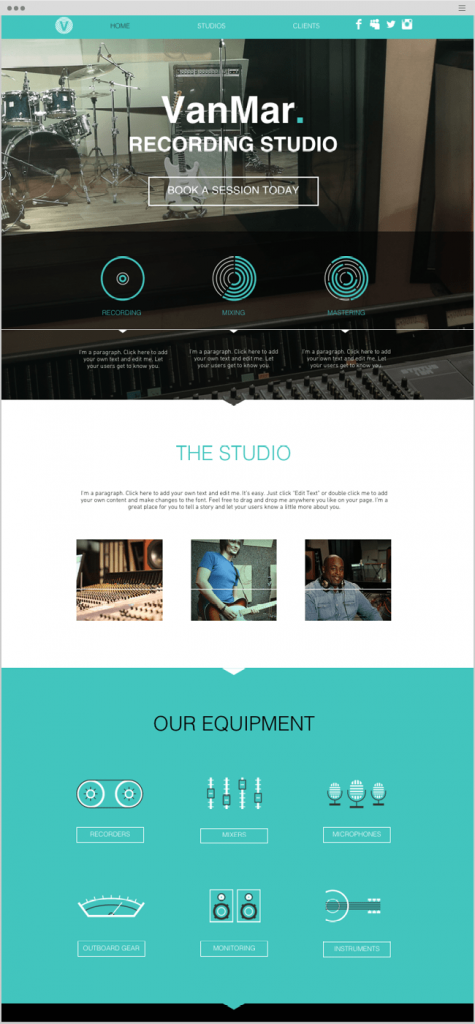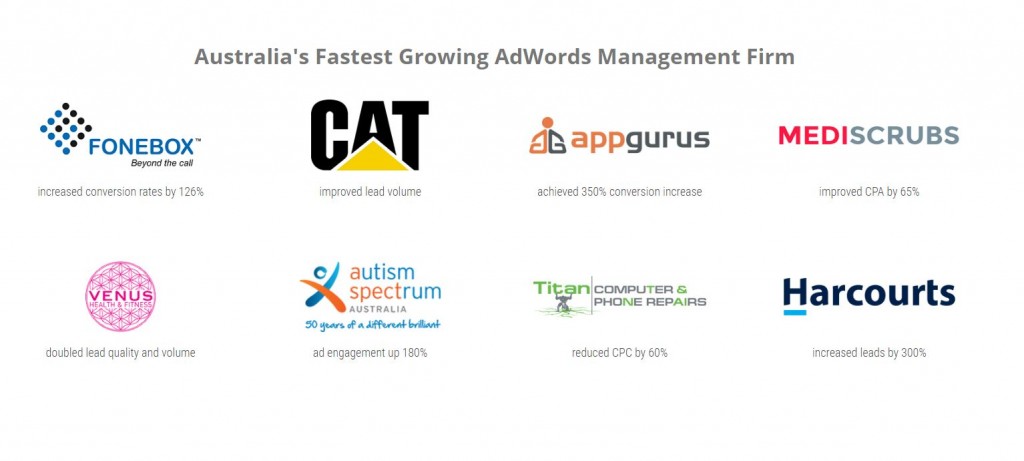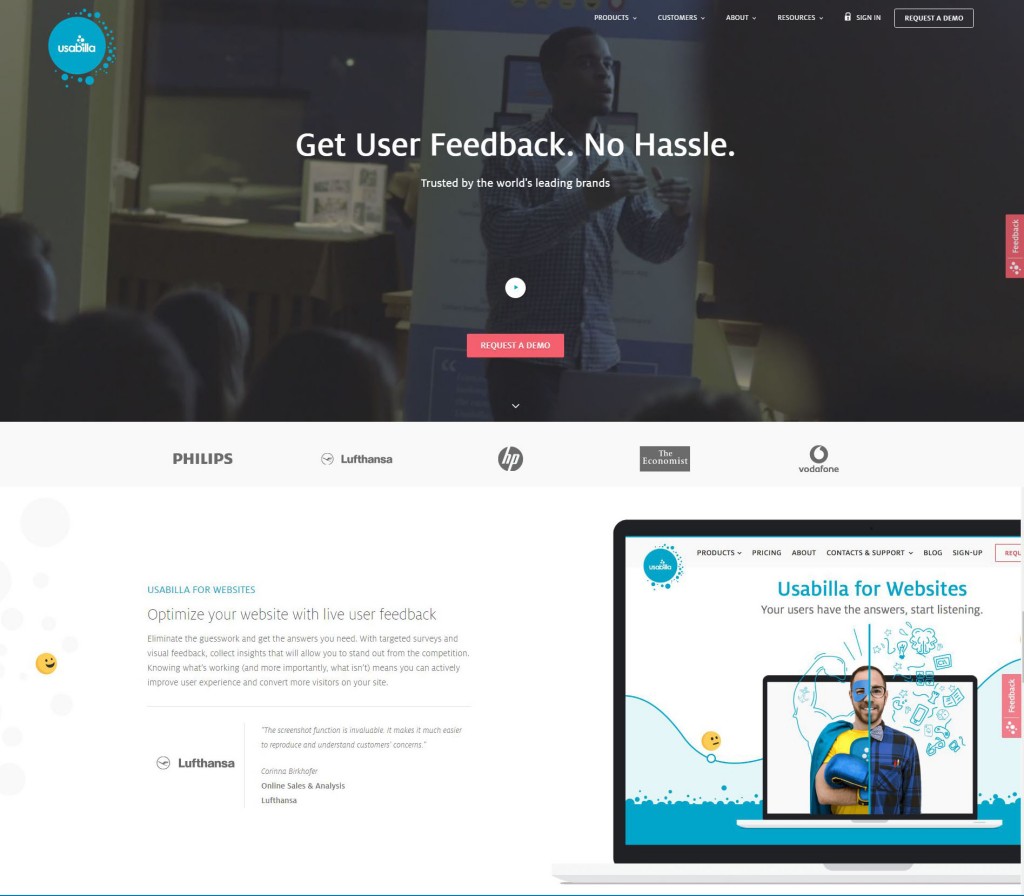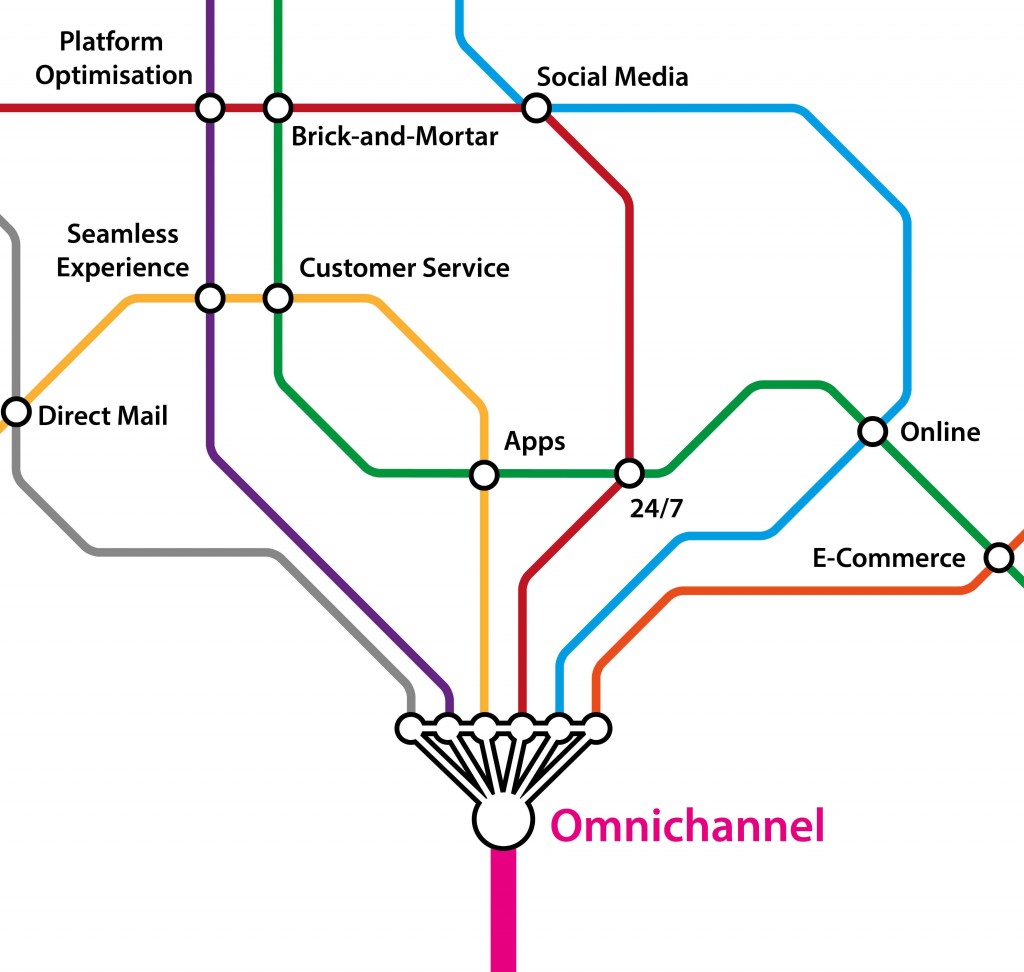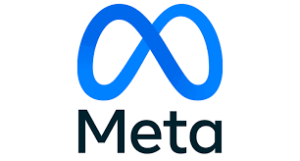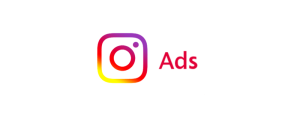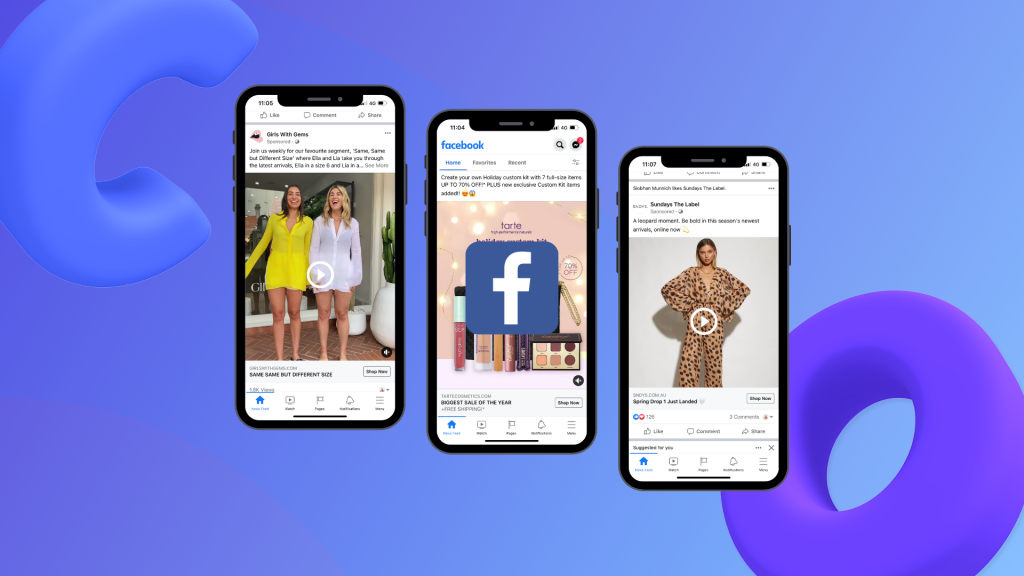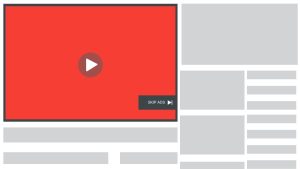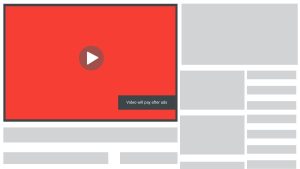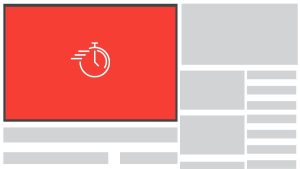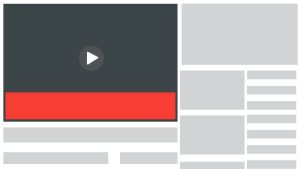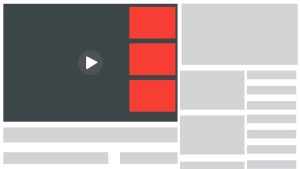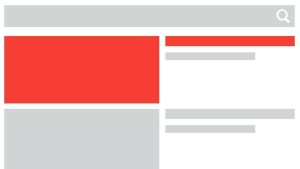What Are Landing Pages and Why Are They Important?
Landing pages play a very important role in digital marketing. An essential part in the customer journey, landing pages are one place where you can turn visitors into either customers or followers.
What is a Landing Page?
A landing page is a dedicated web page on a website often created as a part of a marketing or advertising campaign. It’s a standalone page where a visitor lands after clicking on a link in an email, or ads from Facebook, Instagram, YouTube, Google, Bing, or other social and search platforms.
Unlike other web pages which encourage the exploration of your entire website, a landing page is geared towards a single focus and predetermined goal. It makes use of compelling copy and a strong call to action to encourage users and visitors to take the next step in your customer journey.
What’s the Difference Between a Landing Page and a Home Page
The key difference between a landing page and a home page is focus. A home page is like a busy commercial district with dozens of crossroads and intersections. A home page is focused on directing visitors to other important sections and locations of a website, with multiple links, buttons, and entry points.
A landing page, on the other hand, is like entering and exiting a tunnel with a single destination. Your intention is to have your visitors see the light at the end of it. They direct a visitor towards a single purpose. That means that there are only very limited navigation options.
What Are the Different Types of Landing Pages
When it comes to design, there are several types of landing pages that exist on the web such as squeeze pages, splash pages, and infomercial pages. However, all these types of landing pages can be categorised into two main types:
- Lead Generation Landing Pages
- Click Through Landing Pages
Lead Generation Pages are a form of landing page whose main purpose is to collect data such as the names and email addresses of visitors. In exchange for that data, an offer is usually made such as free ebooks, whitepapers, exclusive content, or webinars.
This is usually done to establish a direct relationship with a user, nurturing that relationship over time and is used by both B2B and B2C businesses.
Clickthrough Landing Pages are more common for ecommerce and software-as-a-service (SaaS) businesses. These landing pages are usually sales pages where the user can view pricing plans or go through the checkout process.
Why Are Landing Pages Important
Because of the high-intent nature of a landing page and its hyper-focus, they are often optimised to create the best possible results. From the design, to the copy and the offer, landing pages turn your website visitors into either leads or customers. This makes them more important than many other pages on your website.
A good landing page can be the determining factor that turns your marketing or advertising campaign into a success. That’s why it’s important to get it right.
Building a landing page, however, can be difficult, as it requires several sets of skills, including web design and copywriting. But that’s where agencies like ours come into the picture. With years of experience on our belts, building a landing page that converts is something we can definitely help you with.
So if you have landing pages that you feel need a quick makeover, or you’re starting from scratch, our experts are just an email or a call away.
Why No One Sticks Around- Improve Site Traffic!
So, you’ve created your website and paid attention to all important details. You’ve even looked at the content you have used over and over to make sure it’s perfect. So why aren’t people making themselves at home and taking a look around? Luckily for you, we’ve provided the right information and some quick tips to improve site traffic.
With the average person taking only 59 seconds to decide whether your website is worthy of their time, you’ve got some serious pressure here. If you don’t spice up your website’s content and appearance to interest more of your audience, your visitor count will quickly diminish.
2017 Website Tips to Adopt and Avoid!
How did your website rate in 2016? Did you see the conversions you were looking for, or were people bouncing off your website faster than a kid who’s just found out it’s dinner time? Read our 2017 website tips to find out how your business can better stand out in the New Year!
Things To Consider:
Long-Scroll Layouts Vs Excess Tabs
Once upon a time websites contained lots of individual pages under different tabs and links, but these days you might have noticed a distinct shift away from this. Nowadays, your average website implements long-scrolling; where businesses will list multiple sections all on the one page. For example, instead of clicking on an ‘about us’ and then ‘awards’ tab, a website might choose to put all of this information on one landing page, under multiple headings.
And it really is a simpler process – particularly for those who are scrolling on their phones. Being able to keep scrolling down to see all the relevant information for that page, as opposed to getting lost in the depths of multiple tabs, is a much more user-friendly experience.
On that note, if you’re looking to test the user-friendliness of your website there are plenty of online service providers (such as those below) that can assist you with valuable feedback. Some may even provide a free trial as well! We recommend you give the following a try:
Reassure Customers with Numbers
Have you won a number of awards, or helped hundreds of local customers with their product needs? Don’t be shy of boasting your achievements – these figures can persuade a potential customer that you’re not just another average Joe. Show them why they should come to you!
Video, Video, Video
Yes, video content is a big deal, and if you don’t yet know it your business is likely suffering! Just like a picture can paint a thousand words, a video is even easier on the eye of your potential customer. For example, instead of filling your site with text heavy content about your product, try adding a video at the top that clearly demonstrates how the product works, and shows it being used by a real person (even better, add a testimonial of a customer who has used your service or product).
Things to Consider Avoiding:
Homepage Carousels
Although they add an interesting visual dimension to your website, carousel designs can actually reduce your SEO rankings; as they lack content that Google can crawl (unless each image is labeled). Likewise, slow loading times for high-res images can also be enough to drive people away before they’ve clicked any further. This is not to say that you should definitely steer clear of these types of ads, but it is important to weigh up if they are the right choice for you – after all, according to a 2013 study from Erik Runyon, only 1% of people actually click on a carousel ad.
When designing your website (or having it designed for you), put yourself in the shoes of a potential customer and ask yourself:
- Is it easy to find what I’m looking for?
- Could navigation be better?
- Are there too many tabs?
- Are the colours and fonts consistent?
- Do I have too much block text on each page?
- Does my layout look dated?
With just a few questions such as these, you’ll be on your way to creating a website that is functional, user-friendly, and unique to your product. If you need a hand with getting on the right track, give our web experts a call on 1300 332 256.
3 Ways to Improve Your Marketing Content!
When you’re running your own business, it can can be easy to assume your customers and followers want to read every brilliant blog you post. But great as they may be, if you don’t have the right AdWords and SEO practices in place, it’s possible your brilliant content could be getting lost in cyberspace.
Below, we share three ways that you can check on the SEO health of your content before moving on to more complex marketing strategies.
Google Trends
If you’re stuck on what to write about, ‘Google Trends’ is one of the best sites for discovering trending topics and stories. By searching through the most popular stories and finding the ones that relate to your organisation / business, you can take note of trending keywords and utilise them in your content. That way, when it comes time to analysing your SEO trends, you can at least be confident that you’re writing about relevant and engaging topics.
BrowserStack
So, you’ve spent hours on your website and you think it’s coming together pretty well – but have you made sure it looks clear and engaging on both desktop and mobile platforms? Ensuring your content is formatted correctly across all types of digital devices and platforms is crucial, and cannot be understated! The good news is, with BrowserStack you can quickly work out what is and isn’t working across each platform, and adjust as necessary.
Seoptimer
Using this free website review / SEO audio tool, you can find out in just a couple of seconds what you need to do to improve your website SEO! For example, maybe you need to add some ALT attributes to your images, or add a proper sitemap.xml file? It’s a quick easy analysis, and you can even download a free PDF report.
While online marketing is an extremely complex and ever-changing world, simple tools such as these can give you a head start; allowing you to get an indication of what you need to build upon to make sure your website content is reaching as many people as possible.
It’s always worth noting however – unless you consider yourself an AdWords and SEO guru – taking the next step toward more complex marketing strategies is generally better left in the hands of a dedicated marketing professional. After all, this is your business!
Are you looking for advice on how to implement these changes, create more engaging content, and ultimate get more traffic toward your website? Contact the GMT team today on 1300 332 256.
Are Myer overdue with their ‘New Myer’ strategy, or just fashionably late?
Myer have recently announced their new ‘New Myer’ strategy, with emphasis on omni-channel pathways and marketing initiatives to leverage relevant customer behaviours in the face of strong digital competition from retail rivals at home and overseas. But have Myer come to the game too late? With a predicted $600 million, five year transformation agenda, including $200 million into omni-channel capabilities, the new strategy undoubtedly takes on-board the changing space of consumer spending and behaviour. Though when taking a look at competitors overseas, it seems to be a serious game of catch-up.
There is an ongoing trend which is mirrored across many industries in Australia when it comes to successfully investing in technology and digital transformations. While Australian’s are some of the fastest consumers of new digital technologies, Australian businesses are slow on the uptake. It’s very much a case of ‘let’s wait and see just how much of an impact this will actually have’ and commonly, businesses finding themselves left far behind due to exactly that.
Modern retail is an online and offline journey, but it is increasingly apparent that if it’s not online, then it may as well not exist, particularly when it comes to ‘fashion’. In 2014 the stark truth is that Australian retail giants Myer and David Jones could only account online sales for approximately 2% of total sales. For those with their eyes on the ball, the massive opportunity this presents small to medium sized businesses in Australia is huge. For those which already have a good online E-commerce presence, then the customers are there for the taking. For those who are coming to the realisation that now is the time to move, they can guarantee that it won’t take five years and $600 million to establish themselves online.
There are exceptions to Myer’s blunder. Many businesses saw the writing on the wall after the GFC and realised that innovation was needed to pick up business again. With technology producing smart mobile devices and companies like Google driving online relevancy, data-driven marketing has reshaped the way businesses must communicate and connect with their customers. In Australia, brands such as Country Road and Lorna Jane are shining examples of what positive omni-channel experiences can do not just for revenue, profit and growth, but brand loyalty and advocacy.
So in the face of retail globalisation, digital disruption and consumer expectations, Myer’s new strategy, while a welcome sight, will have to wait a while to see the fruits of its harvest. With the busy Christmas shopping season quickly approaching, and with Myer’s notorious online system outage one week out from Christmas Day in 2014, consumers and industry watchers will have to see whether small to medium businesses will take advantage of the online opportunity and good fortune. If you’re looking to update your e-Commerce strategy in time for the Holiday Season this year, then get in touch with Get More Traffic today on 1300 332 256.
The 3 Key Features You Must Have in Online Marketing
Whether you are stepping into the world of online marketing for the first time, or if you are a savvy marketing business owner, we all have one thing in common – that we should never stop learning and we should never assume that we know it all. As the bright and bubbly crowd that we are here at Get More Traffic, we’re all for learning from those around us. So go on, follow our lead and learn a little something from us! We reckon there are three main points you must always include in your online marketing strategy; websites which are optimised for high conversion, Pay-per-Click advertising, and Search Engine Optimisation (SEO).
Conversion Optimised Website
Your website is the online version of a physical shopfront. People will choose to enter your website based on whether they like the look of your website, or not. Believe it or not, a successful website comes down to whether it has been optimised for conversions. Let’s face it; we live in a world where people expect everything to be available at their fingertips. If your business is not offering this, then people will go elsewhere; they will go to your competition! A website which has been created for optimal conversion rates should come before a Pay-per-Click advertising strategy, and a SEO plan. There is no point in running these methods if they aren’t going to lead your prospective customers to a well-functioning website. It’s why we offer Convertopages as a website conversion product. Speak to your Account Driver today if you are interested in learning more.
Pay Per Click Advertising
Want prospective customers to find you when they are searching for what products and services you offer? Then Pay-per-Click advertising is what you want. It puts your business in front of users at the exact time they are online and looking for the products and services you sell. In terms of timing, you couldn’t get it any better. But what about a user’s buying cycle? What’s that, you ask? This determines where the user is in their search query progress. Users can begin their search online for a product or service, but will revisit that search process four to five separate times before they are ready to click on your ad link. You want to capture their attention when they are at this stage in the buying cycle. Unsure how to do this? It’s the exact reason why you have someone like your Account Driver here at Get More Traffic to help you with this. Speak to them today about your target markets buying cycle.
Search Engine Optimisation (SEO)
SEO tactics help your website to rank as high as possible on search engines. We prefer to focus on Google simply due to the sheer size of the online giant! When your website ranks well in Google search, users will inherently trust your website to be relevant to their search query. It also builds trust, brand recognition and it puts you above your competitors. However, SEO does have a bit of a science to it, and getting it to work for your website is seriously a full time job. Due to the fact that a company like Google are always tinkering with their search algorithms, it’s our job to stay on top of what that means for you!
So, gone are the days when you could easily rely on a few advertisements in the local newspaper or radio station. With prospective clients always online, whether that’s via a PC or mobile device, you need to meet them there. The three key features above are what will ensure you can this successfully. If you’re interested in learning how Get More Traffic can help your business, simply give us a call on 1300 332 256 – we’d love to have a chat and help you out any way we can.
